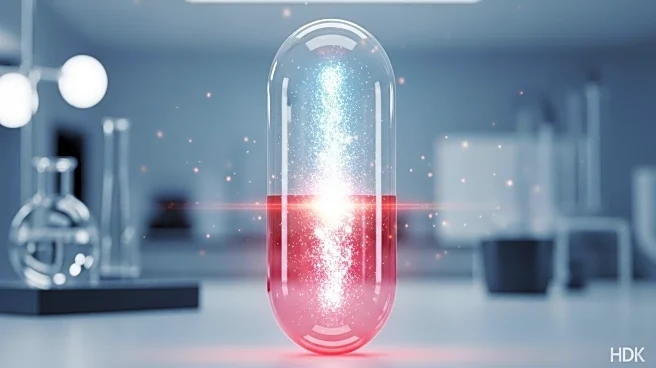What's Happening?
A comprehensive review and meta-analysis of preclinical studies on Salvinorin A, a naturally occurring hallucinogen, has been conducted to assess its therapeutic potential in various neurological and psychiatric disorders. The analysis included 82 studies, with a focus on pain, cerebrovascular diseases, addiction, and depression. Salvinorin A demonstrated promising neuroprotective effects in cerebrovascular disease models, including reductions in infarct size and neurological deficits. It also showed anti-addictive properties in addiction studies, particularly in reducing cocaine-seeking behavior. However, the compound exhibited mixed results in depression studies, with some indicating antidepressant effects and others depressogenic outcomes. Toxicity assessments revealed anxiogenic effects and impairments in motor and cognitive functions, although vital parameters remained largely unaffected.
Why It's Important?
The findings from this review highlight the complex pharmacological profile of Salvinorin A, suggesting potential therapeutic applications in treating neurological disorders. Its neuroprotective and anti-addictive properties could offer new avenues for managing conditions like stroke and addiction. However, the anxiogenic and cognitive impairments associated with its use raise concerns about its safety and side effects. These insights are crucial for guiding future research and development of Salvinorin A analogues with optimized therapeutic profiles and reduced adverse effects. The study underscores the need for careful consideration of the compound's benefits and risks in clinical settings.
What's Next?
Further research is needed to explore the clinical applications of Salvinorin A and its analogues, focusing on optimizing their pharmacokinetic profiles and minimizing side effects. Studies should aim to establish safe dosing regimens and investigate long-term effects in human trials. Additionally, the development of analogues with improved therapeutic efficacy and safety profiles could enhance the potential for clinical use. Regulatory bodies and healthcare providers will need to evaluate the compound's risk-benefit ratio before considering its integration into treatment protocols for neurological and psychiatric disorders.
Beyond the Headlines
The exploration of Salvinorin A's therapeutic potential raises ethical considerations regarding the use of hallucinogens in medicine. The compound's psychoactive properties necessitate a careful approach to its application, balancing therapeutic benefits with potential risks of abuse and adverse psychological effects. The development of analogues may mitigate some of these concerns, offering a pathway to harnessing the benefits of Salvinorin A while minimizing its drawbacks. This research contributes to the broader discourse on the role of psychoactive substances in modern medicine.










